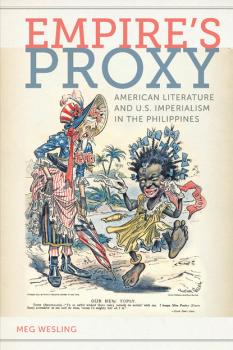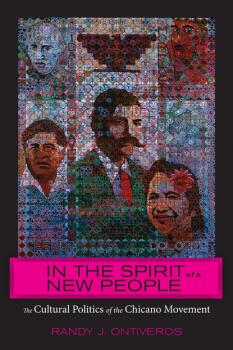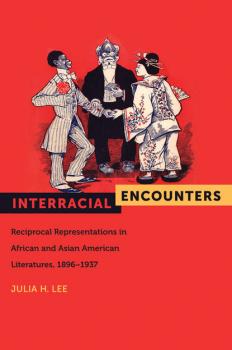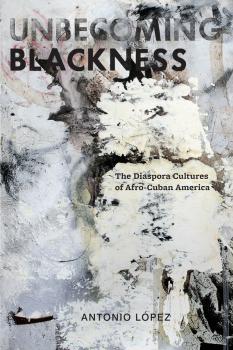ТОП просматриваемых книг сайта:















American Literatures Initiative
Скачать книги из серии American Literatures InitiativeАннотация
In the late nineteenth century, American teachers descended on the Philippines, which had been newly purchased by the U.S. at the end of the Spanish-American War. Motivated by President McKinley’s project of “benevolent assimilation,” they established a school system that centered on English language and American literature to advance the superiority of the Anglo-Saxon tradition, which was held up as justification for the U.S.’s civilizing mission and offered as a promise of moral uplift and political advancement. Meanwhile, on American soil, the field of American literature was just being developed and fundamentally, though invisibly, defined by this new, extraterritorial expansion.Drawing on a wealth of material, including historical records, governmental documents from the War Department and the Bureau of Insular Affairs, curriculum guides, memoirs of American teachers in the Philippines, and 19th century literature, Meg Wesling not only links empire with education, but also demonstrates that the rearticulation of American literary studies through the imperial occupation in the Philippines served to actually define and strengthen the field. Empire’s Proxy boldly argues that the practical and ideological work of colonial dominance figured into the emergence of the field of American literature, and that the consolidation of a canon of American literature was intertwined with the administrative and intellectual tasks of colonial management.
Аннотация
Reexamining the Chicano civil rights movement of the 1960s and 1970s, In the Spirit of a New People brings to light new insights about social activism in the twentieth-century and new lessons for progressive politics in the twenty-first. Randy J. Ontiveros explores the ways in which Chicano/a artists and activists used fiction, poetry, visual arts, theater, and other expressive forms to forge a common purpose and to challenge inequality in America. Focusing on cultural politics, Ontiveros reveals neglected stories about the Chicano movement and its impact: how writers used the street press to push back against the network news; how visual artists such as Santa Barraza used painting, installations, and mixed media to challenge racism in mainstream environmentalism; how El Teatro Campesino’s innovative “actos,” or short skits,sought to embody new, more inclusive forms of citizenship; and how Sandra Cisneros and other Chicana novelists broadened the narrative of the Chicano movement. In the Spirit of a New People articulates a fresh understanding of how the Chicano movement contributed to the social and political currents of postwar America, and how the movement remains meaningful today.
Аннотация
The last couple of decades have witnessed a flourishing of Arab-American literature across multiple genres. Yet, increased interest in this literature is ironically paralleled by a prevalent bias against Arabs and Muslims that portrays their long presence in the US as a recent and unwelcome phenomenon. Spanning the 1990s to the present, Carol Fadda-Conrey takes in the sweep of literary and cultural texts by Arab-American writers in order to understand the ways in which their depictions of Arab homelands, whether actual or imagined, play a crucial role in shaping cultural articulations of US citizenship and belonging. By asserting themselves within a US framework while maintaining connections to their homelands, Arab-Americans contest the blanket representations of themselves as dictated by the US nation-state. Deploying a multidisciplinary framework at the intersection of Middle-Eastern studies, US ethnic studies, and diaspora studies, Fadda-Conrey argues for a transnational discourse that overturns the often rigid affiliations embedded in ethnic labels. Tracing the shifts in transnational perspectives, from the founders of Arab-American literature, like Gibran Kahlil Gibran and Ameen Rihani, to modern writers such as Naomi Shihab Nye, Joseph Geha, Randa Jarrar, and Suheir Hammad, Fadda-Conrey finds that contemporary Arab-American writers depict strong yet complex attachments to the US landscape. She explores how the idea of home is negotiated between immigrant parents and subsequent generations, alongside analyses of texts that work toward fostering more nuanced understandings of Arab and Muslim identities in the wake of post-9/11 anti-Arab sentiments.
Аннотация
Part of the American Literatures Initiative Series Chicano Nations argues that the transnationalism that is central to Chicano identity originated in the global, postcolonial moment at the turn of the nineteenth century rather than as an effect of contemporary economic conditions, which began in the mid nineteenth century and primarily affected the laboring classes. The Spanish empire then began to implode, and colonists in the “new world” debated the national contours of the viceroyalties. This is where Marissa K. López locates the origins of Chicano literature, which is now and always has been “postnational,” encompassing the wealthy, the poor, the white, and the mestizo. Tracing its long history and the diversity of subject positions it encompasses, Chicano Nations explores the shifting literary forms authors have used to write the nation from the nineteenth to the twenty-first centuries.López argues that while national and global tensions lie at the historical heart of Chicana/o narratives of the nation, there should be alternative ways to imagine the significance of Chicano literature other than as a reflection of national identity. In a nuanced analysis, the book provides a way to think of early writers as a meaningful part of Chicano literary history, and, in looking at the nation, rather than the particularities of identity, as that which connects Chicano literature over time, it engages the emerging hemispheric scholarship on U.S. literature.
Аннотация
2013 Honorable Mention, Asian American Studies Association's prize in Literary Studies[/b] Part of the American Literatures Initiative Series Why do black characters appear so frequently in Asian American literary works and Asian characters appear in African American literary works in the early twentieth century? Interracial Encounters attempts to answer this rather straightforward literary question, arguing that scenes depicting Black-Asian interactions, relationships, and conflicts capture the constitution of African American and Asian American identities as each group struggled to negotiate the racially exclusionary nature of American identity. In this nuanced study, Julia H. Lee argues that the diversity and ambiguity that characterize these textual moments radically undermine the popular notion that the history of Afro-Asian relations can be reduced to a monolithic, media-friendly narrative, whether of cooperation or antagonism. Drawing on works by Charles Chesnutt, Wu Tingfang, Edith and Winnifred Eaton, Nella Larsen, W.E.B. Du Bois, and Younghill Kang, Interracial Encounters foregrounds how these reciprocal representations emerged from the nation’s pervasive pairing of the figure of the “Negro” and the “Asiatic” in oppositional, overlapping, or analogous relationships within a wide variety of popular, scientific, legal, and cultural discourses. Historicizing these interracial encounters within a national and global context highlights how multiple racial groups shaped the narrative of race and national identity in the early twentieth century, as well as how early twentieth century American literature emerged from that multiracial political context. 2013 Honorable Mention, Asian American Studies Association's prize in Literary Studies[/b] Part of the American Literatures Initiative Series Why do black characters appear so frequently in Asian American literary works and Asian characters appear in African American literary works in the early twentieth century? Interracial Encounters attempts to answer this rather straightforward literary question, arguing that scenes depicting Black-Asian interactions, relationships, and conflicts capture the constitution of African American and Asian American identities as each group struggled to negotiate the racially exclusionary nature of American identity. In this nuanced study, Julia H. Lee argues that the diversity and ambiguity that characterize these textual moments radically undermine the popular notion that the history of Afro-Asian relations can be reduced to a monolithic, media-friendly narrative, whether of cooperation or antagonism. Drawing on works by Charles Chesnutt, Wu Tingfang, Edith and Winnifred Eaton, Nella Larsen, W.E.B. Du Bois, and Younghill Kang, Interracial Encounters foregrounds how these reciprocal representations emerged from the nation’s pervasive pairing of the figure of the “Negro” and the “Asiatic” in oppositional, overlapping, or analogous relationships within a wide variety of popular, scientific, legal, and cultural discourses. Historicizing these interracial encounters within a national and global context highlights how multiple racial groups shaped the narrative of race and national identity in the early twentieth century, as well as how early twentieth century American literature emerged from that multiracial political context.
Аннотация
In Unbecoming Blackness, Antonio López uncovers an important, otherwise unrecognized century-long archive of literature and performance that reveals Cuban America as a space of overlapping Cuban and African diasporic experiences. López shows how Afro-Cuban writers and performers in theU.S. align Cuban black and mulatto identities, often subsumed in the mixed-race and postracial Cuban national imaginaries, with the material and symbolic blackness of African Americans and other Afro-Latinas/os. In the works of Alberto O’Farrill, Eusebia Cosme, Rómulo Lachatañeré, and others, Afro-Cubanness articulates the African diasporic experience in ways that deprive negro and mulato configurations of an exclusive link with Cuban nationalism. Instead, what is invoked is an “unbecoming” relationship between Afro-Cubans in the U.S and their domestic black counterparts. The transformations in Cuban racial identity across the hemisphere, represented powerfully in the literary and performance cultures of Afro-Cubans in the U.S., provide the fullest account of a transnational Cuba, one in which the Cuban American emerges as Afro-Cuban-American, and the Latino as Afro-Latino.






